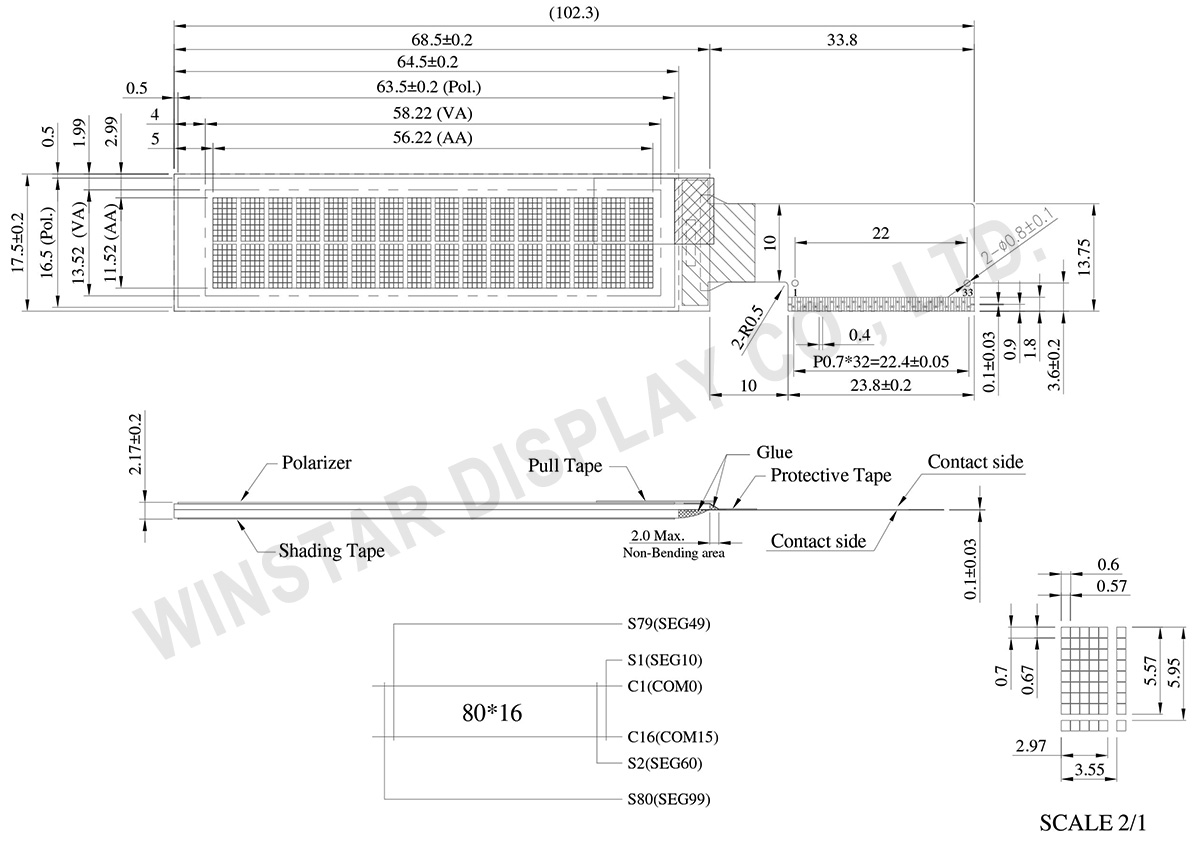Das 2 Zeilen x 16 Zeichen COG OLED-Display-Modul (Modell: WEO001602C) verwendet ein COG-Design (Chip On Glass) und bietet eine leistungsstarke und zuverlässige Display-Lösung. Dieses OLED-Modul ist bekannt für seine hervorragende Anzeigequalität und Langlebigkeit und wird in einer Vielzahl von Anwendungen eingesetzt.
Die Abmessungen des Moduls betragen 68,5 x 17,5 mm bei einer Dicke von 2,17 mm. Die aktive Fläche misst 56,22 x 11,52 mm, und die Diagonale beträgt 2,26 Zoll. Ausgestattet mit dem SSD1311-Steuer-IC unterstützt der WEO001602C eine integrierte Zeichencodierung, die Zeichencodierungen wie ASCII, Englisch, europäische und japanische Schriftarten umfasst. Jedes Zeichen besteht aus 5x8 Pixeln, was eine detaillierte und klare Anzeige gewährleistet.
Das Modul zeigt 2 Zeilen mit jeweils 16 Zeichen an. Dank der selbstleuchtenden OLED-Technologie benötigt dieses Modul keine Hintergrundbeleuchtung, was es leichter und dünner macht und den Kontrast auf bis zu 10.000:1 erhöht. Es bietet zudem einen ultraweiten Betrachtungswinkel von bis zu 175 Grad, was eine konsistente Anzeigequalität aus verschiedenen Blickwinkeln garantiert. Das Modul zeichnet sich außerdem durch niedrigen Energieverbrauch und einen breiten Temperaturbereich aus, was es sehr vielseitig macht.
Der Betriebsbereich des WEO001602C reicht von -40°C bis +80°C, während der Lagerbereich von -40°C bis +85°C reicht, was eine stabile Funktion unter extremen Bedingungen ermöglicht. Das Modul arbeitet mit einer logischen Spannungsrange von 2,4V bis 3,3V, einem typischen Wert von 3V, und verwendet eine 1/16 Duty-Cycle-Methode.
Darüber hinaus unterstützt der WEO001602C mehrere Schnittstellenoptionen, darunter die 6800/8080 8-Bit parallele und I2C/SPI serielle Schnittstelle, und bietet flexible Anschlussmöglichkeiten, um unterschiedlichen Systemanforderungen gerecht zu werden. Die Modulserie bietet auch verschiedene Flexible Printed Circuit (FPC)-Optionen, um unterschiedliche Kundenbedürfnisse zu erfüllen.
Mit seiner hervorragenden Anzeigequalität, dem breiten Temperaturbereich und den flexiblen Schnittstellenoptionen ist das WEO001602C OLED-Display-Modul eine ideale Wahl, um traditionelle LCD-Module zu ersetzen. Wir empfehlen, dieses 2 Zeilen x 16 Zeichen OLED-Modul zu verwenden, um die Anzeigeleistung Ihres Produkts zu verbessern, eine höhere Bildqualität zu erzielen und den Energieverbrauch zu senken.
 FPC-Optionen
FPC-Optionen













